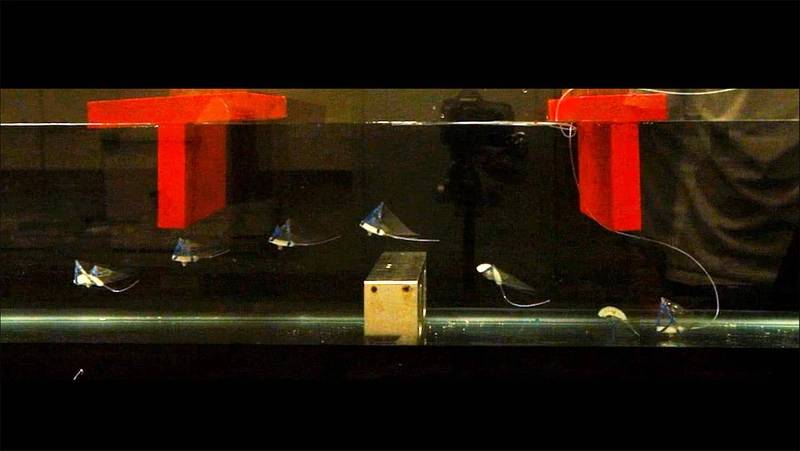A team of researchers from North Carolina State University has beaten its own record for the fastest swimming soft robot, drawing inspiration from manta rays to improve their ability to control the robot’s movement in the water.
“Two years ago, we demonstrated an aquatic soft robot that was able to reach average speeds of 3.74 body lengths per second,” says Jie Yin, corresponding author of a paper on the work. “We have improved on that design. Our new soft robot is more energy efficient and reaches a speed of 6.8 body lengths per second. In addition, the previous model could only swim on the surface of the water. Our new robot is capable of swimming up and down throughout the water column.”
The soft robot has fins shaped like those of a manta ray, and is made of a material that is stable when the fins are spread wide. The fins are attached to a flexible, silicone body that contains a chamber that can be pumped full of air. Inflating the air chamber forces the fins to bend – similar to the down stroke when a manta flaps its fins. When the air is let out of the chamber, the fins spontaneously snap back into their initial position.
Studying the fluid dynamics of manta rays also played a key role in controlling the vertical movement of the soft robot. “We observed the swimming motion of manta rays and were able to mimic that behavior in order to control whether the robot swims toward the surface, swims downward, or maintains its position in the water column,” says Jiacheng Guo, co-author of the paper and a Ph.D. student at the University of Virginia. “When manta rays swim, they produce two jets of water that move them forward. Mantas alter their trajectory by altering their swimming motion. We adopted a similar technique for controlling the vertical movement of this swimming robot. We’re still working on techniques that will give us fine control over lateral movements.”
The researchers have demonstrated the soft robot’s functionality in two different ways. First, one iteration of the robot was able to navigate a course of obstacles arrayed on the surface and floor of a water tank. Second, the researchers demonstrated that the untethered robot was capable of hauling a payload on the surface of the water, including its own air and power source.

